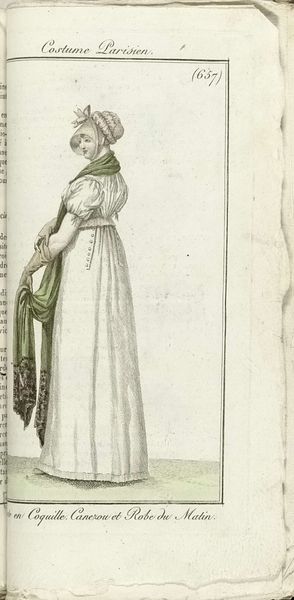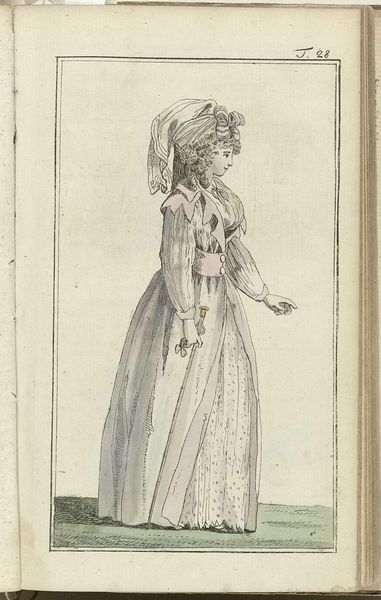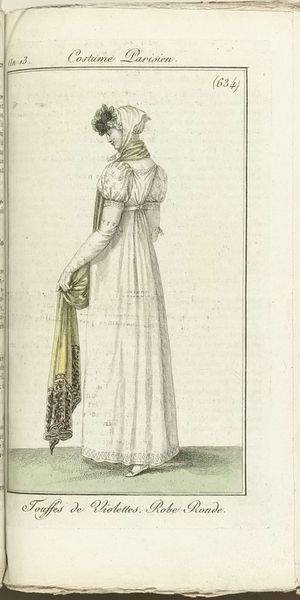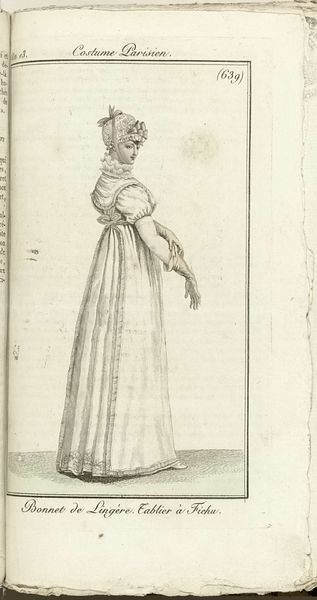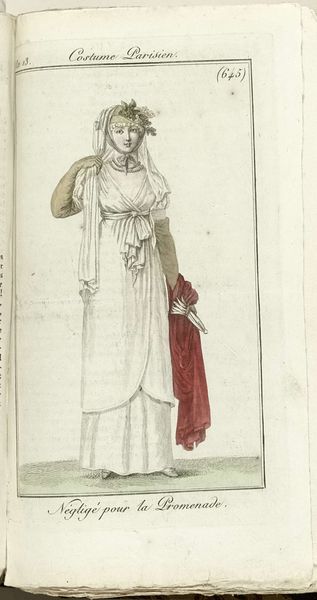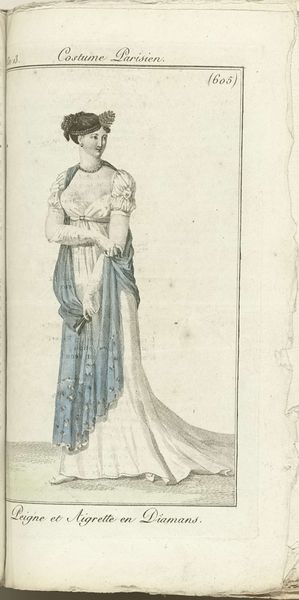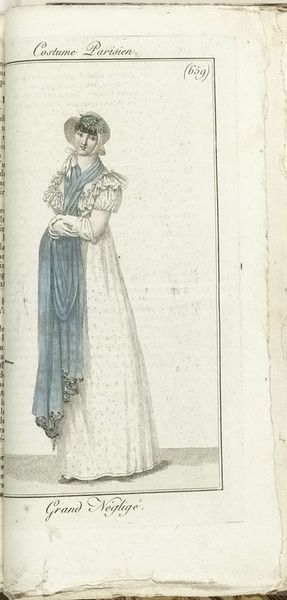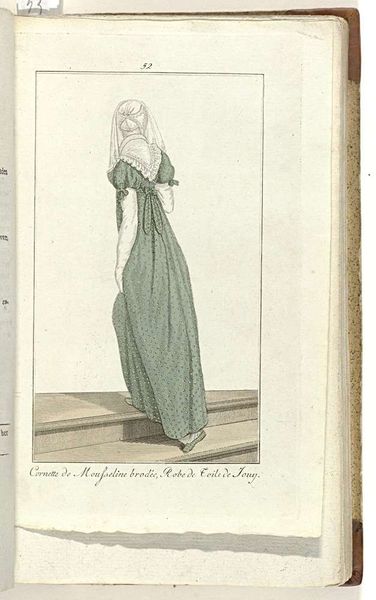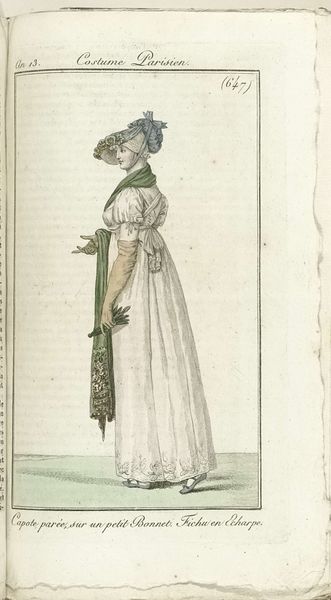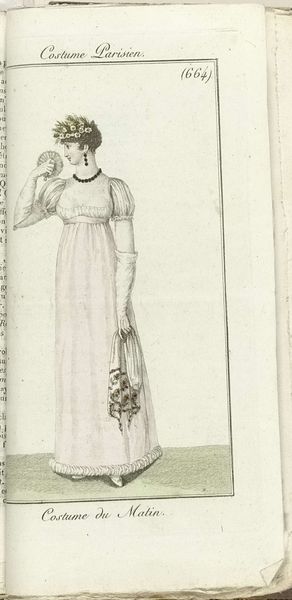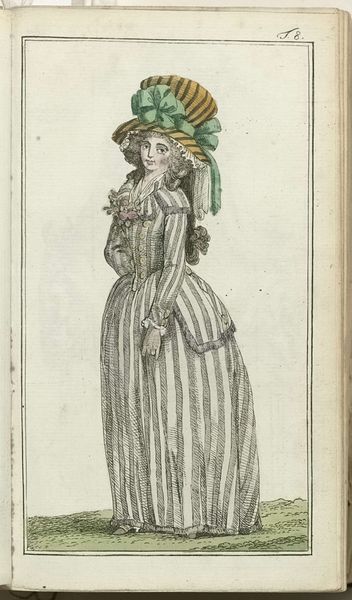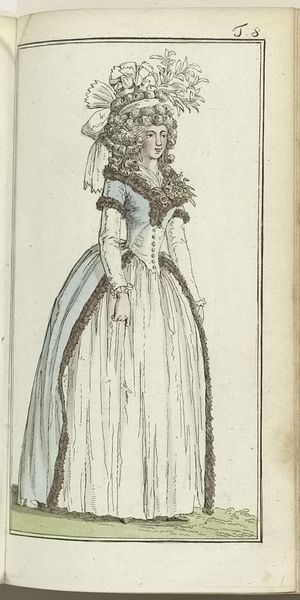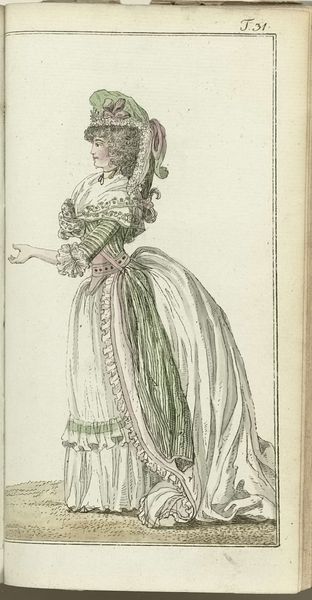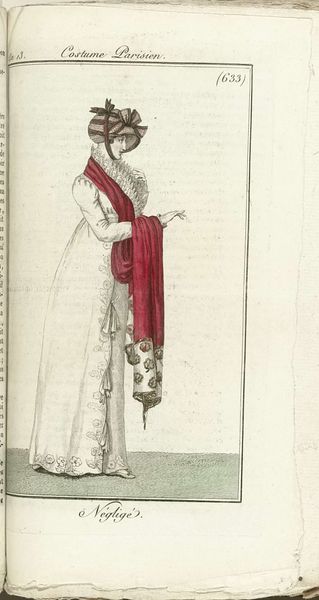
Journal des Dames et des Modes, Costume Parisien, 1805, An 13 (635) Chapeau de Paille blanche... 1805
0:00
0:00
print, engraving
#
portrait
# print
#
figuration
#
romanticism
#
genre-painting
#
dress
#
engraving
Dimensions: height 181 mm, width 112 mm
Copyright: Rijks Museum: Open Domain
Curator: Here we have an engraving from 1805 entitled "Journal des Dames et des Modes, Costume Parisien, 1805, An 13 (635) Chapeau de Paille blanche…". It appears to be an illustration of Parisian fashion. Editor: Yes, a portrait, and instantly evokes a sense of delicate refinement, wouldn’t you agree? The lines are so precise, almost mathematical, rendering the scene with an air of cool observation. Curator: Precisely. Notice how the material quality of the clothing is conveyed – the probable muslin of the dress, how it gathers and drapes. These period fashion plates provide invaluable records of textile production and dressmaking techniques of the era. One can almost feel the lightness of the fabric through the rendering of line and texture. Editor: Good point, and I find myself drawn to the formal elements—the slender verticality of the figure contrasted with the soft curves of the shawl and hat. The artist, Horace Vernet, masterfully balances simplicity and ornamentation. It seems a carefully constructed presentation. Curator: Absolutely. These images played a critical role in shaping consumer desire and perpetuating ideals of feminine beauty through the materials they promoted. Consider the straw hat itself - adorned with lilacs, suggestive of carefully crafted materials for affluent women, highlighting a specific sector involved in fashion production and consumption. Editor: The use of line also emphasizes the Romantic era aesthetic of idealized elegance; though subtle, the image conveys an element of longing, reflecting a desire for refinement. What looks at first simple has depth through attention to these refined techniques of engraving. Curator: Indeed, and as material culture, we can study them for evidence of economic systems of their time, not merely aesthetic expression. From dressmaker to milliner, this fashion plate reveals the many workers contributing to its final material form. Editor: After looking at this, my reading habits have evolved once more. The seemingly delicate artwork bears testament to Horace Vernet’s control and refined talent of Romanticism’s early portraits. Curator: My emphasis now shifts towards the unseen laborers within the clothing trade and its contribution to a society dictated by fashion. Food for thought, I suppose.
Comments
No comments
Be the first to comment and join the conversation on the ultimate creative platform.
